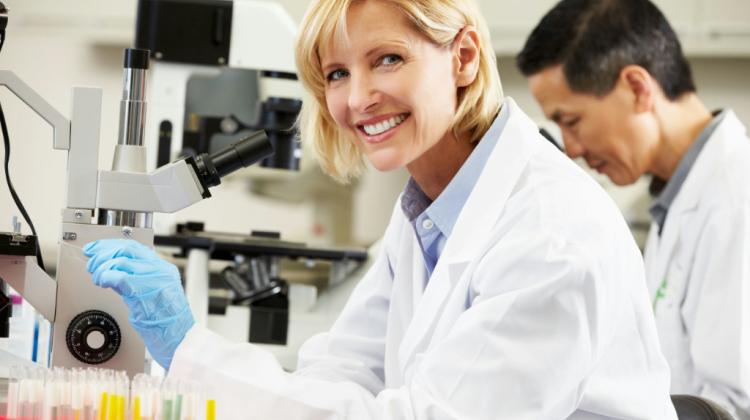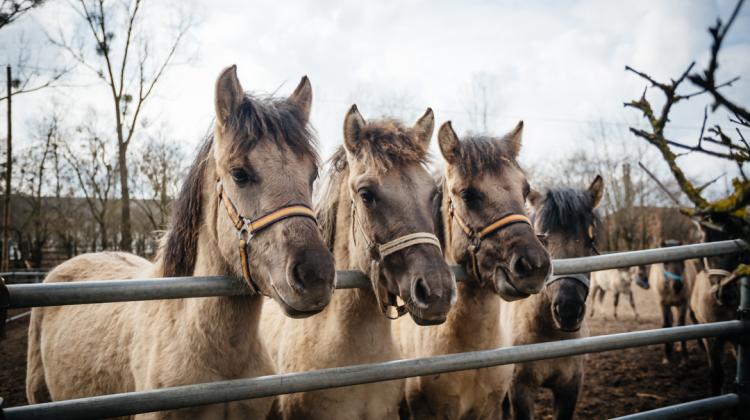Report on women in science academies: Polish Academy of Sciences falls behind
 Photo: Fotolia
Photo: Fotolia
According to a study of the percentage of women who are members of 69 science academies worldwide, the world average is 12 percent. Polish Academy of Sciences compares very poorly to the world - the report shows that only 4 percent o all members of the academy are women.
The report "Women for Science: Inclusion and Participation in Academies of Science" was published in late February by the Academy of Science of South Africa (ASSAf) with the support of the global network of science academies InterAcademy Panel (IAP). The report summarizes, among others, the results of surveys conducted in 2014 in nearly 70 science academies worldwide.
"The results of this report and the recommendations it contains should serve as a guide for scientific academies around the world to develop strategies to increase the participation of women in the academy activities" - summed up the report Prof. Daya Reddy, president of the Academy of Science of South Africa.
Surveys conducted in various academies of sciences show that women are underrepresented in these prestigious groups. On average, in 100 members of the surveyed academies only 12 are women. In addition, in as many as 30 of the 69 academies the percentage of women was below 10.
In Poland, the percentage of women among the members of the academy is very low. The data presented in the report show that out of 533 members of the PAS (both domestic and foreign members were taken into account), only 22 are women. And this is only 4 percent. The only academy of sciences with a worse result than Poland is the academy in Tanzania (5 women in 130 members).
President of the Polish Academy of Sciences Prof. Jerzy Duszyński pointed out in an interview with PAP that the data in the report come from 2014 and include both domestic and foreign members (meanwhile, only domestic members have decision-making powers - including taking an active part in the work of the General Assembly). "Currently, among the 316 national members there are 16 women. So they constitute 5 percent" - he said. He admitted, however, that "the issue is embarrassing". "This shows a tradition that is out of touch with reality" - said Prof. Duszyński and added: "I am trying and will continue to try to change it".
President of the Polish Academy of Sciences noted that elections of new members of the Academy will be held this year - it will be 34 new people (the PAS currently has 316 national members, and the planned number is 350). He admitted he would call for taking into account that there are too few women in the Academy.
The Cuban Academy of Sciences had the best result in the ASSAf report, with women constituting 27 percent of its members. Second place went to the Caribbean Academy of Sciences (26 percent), and third place to the Czech Academy of Sciences (24 percent).
The report also took into account the fields that women members of the academies represented. The percentage of women was highest in the biological sciences and the social sciences, humanities and the arts.
The authors also took into account the presence of women in the academy authorities. Also here the PAS was in the end of the list - according to the report, among 26 people in the Academy authorities was only 1 woman. "Currently, one of the five vice-presidents of the PAS is a woman - Prof. Elżbieta Frąckowiak" - pointed out Prof. Duszyński.
The report also addresses the percentage of women scientists. Here Poland fared little better - women researchers account for 38 percent of all Polish scientists (data from 2012 Eurostat survey).
"Academies of sciences have a dual role: to reward scientific excellence and advise governments and decision-makers on the basis of scientific evidence. For these roles to be fully performed, the recognition of women among the members of academies of sciences and their participation in advisory activities of academies can not be overlooked" - reads the report.
PAP - Science and Scholarship in Poland
lt/ agt/ ula/ zan/
tr. RL
Przed dodaniem komentarza prosimy o zapoznanie z Regulaminem forum serwisu Nauka w Polsce.


















